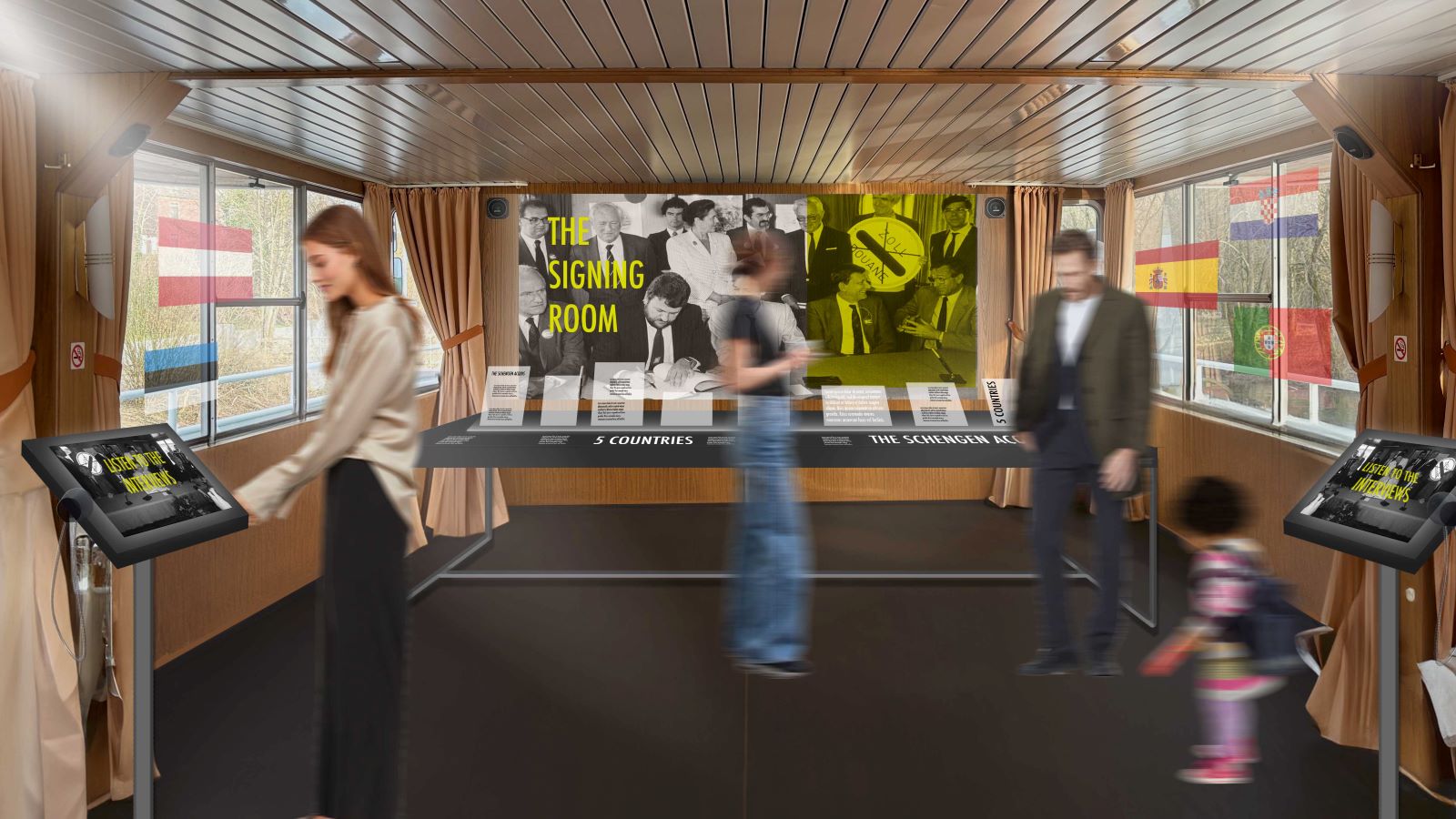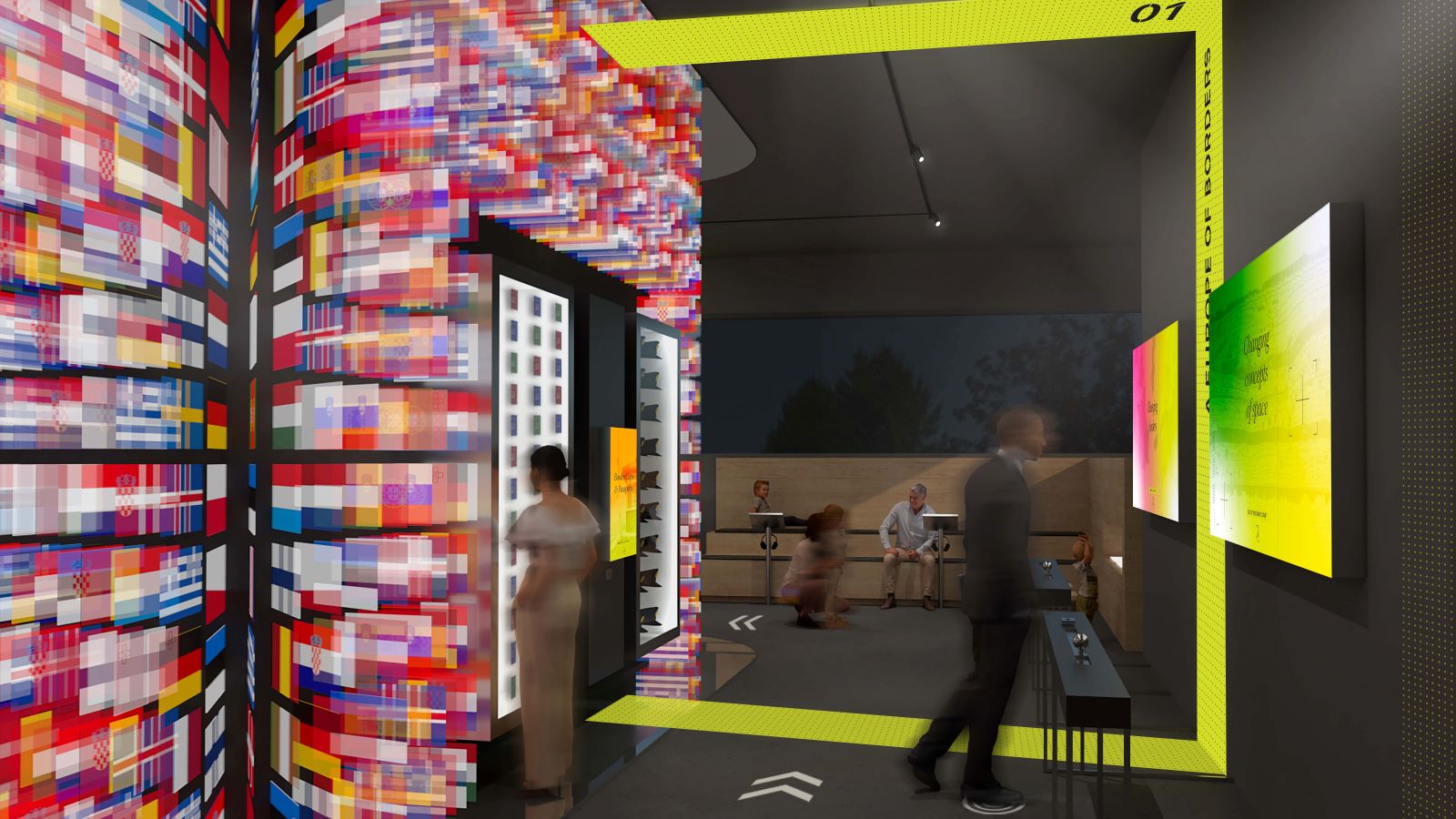The firm Migliore+Servetto, in collaboration with the Multimedia Design Studio Karmachina, was chosen to design the new permanent exhibition and multimedia design project of the European Museum Schengen (Luxembourg) as well as to revalorise the Boat Princesse Marie Astrid II, where the treaty of the same name was signed in 1985. The opening is expected to take place in 2025, forty years after the signature of the historic agreement.

THE MUSEUM
The project of the museum, which follows the restoration of the pre-existing structure by Forma Architects, is based on the idea of ‘Borders’ and reinterprets the space as a ‘borderless’ place, not only from the spatial point of view – i.e. with no architectural barriers – but also from the multimedia and narrative points of view. The aim is creating an inclusive museum, able to accommodate different kinds of visitors; accessible, able to offer different but complementary levels of content reading and sharing; and innovative, as it acts on a multisensory level to activate cognitive memory.
The museum conceives a physical and digital trail divided into stages, an engaging journey to experience diversities, possible matches and integration in an intuitive, interactive and playful way, also alternating moments dedicated to research and reflection. As the texts and objects linked to the topics of the four main sections linearly follow one another, 19 installations – each with a different content, shape and multimedia – form a circular path culminating in the core: the “Cube”, the narrative essence that embodies an immersive and engaging installation at the end of the exhibition.
As far as the new multimodal conception of the exhibition is concerned, this last element is the cornerstone of the setting-up: the Cube is a memorable and dynamic sign of identity representing the creative concept that has “no borders” between the countries and the myriads of people living in them, where the pattern of flags that defines the skin of the cube symbolises the values of union and cooperation. The space expands and develops also thanks to a system of mirrors and dynamic lights, which reproduces the effect of a pulsating organism and turns the Cube into an infinite tower that transcends physical and ideal boundaries. Inside it, an evocative installation tells the personal adventures of the people coming from inside and outside the Schengen space, stories that trigger an emotional catharsis as the final epilogue of the exhibition.
To make the experience inside the museum even more customised and participatory, visitors will use a card (delivered at the entrance) to move freely and activate the different digital stations, as well as to select the desired language (among German, French and English). Moreover, the path for children and kids will be guided by a booklet, developed through a playful approach to make the space accessible and enjoyable also by the younger audience.
Finally, the new European Museum Schengen will also host a completely renovated reception, used as a tourist information centre and as an introduction to the exhibition, with a section for the check-in.

THE BOAT
The project by Migliore+Servetto with Karmachina also includes the redevelopment and rehang of the boat Princesse Marie Astrid II, where the Schengen Treaty was signed. The boat and its original structure, worn out by the use and the passing of time, serve as a backdrop for the story told and at the same time continuously interact with the new setting-up of the museum. In the room on the upper deck the finishing and the materials, such as curtains and lamps, evoke the atmosphere and the appearance of that time, integrating with the installations and the contemporary furniture. A flexible and multifunctional system, which can acquire different spatial configurations and meet different needs, was chosen for the lower deck of the boat.
The boat will thus be completely renovated and will host also new functions, such as a meeting room, an area for temporary exhibitions and a lounge, as well as a new dynamic installation telling the story of the signature of the Schengen Agreement. Starting from the Signature Room, the boat will thus become a huge travelling ‘stage machinery’, able to host flexible narrative scenarios and welcome visitors to a surprising and dynamic environment.


